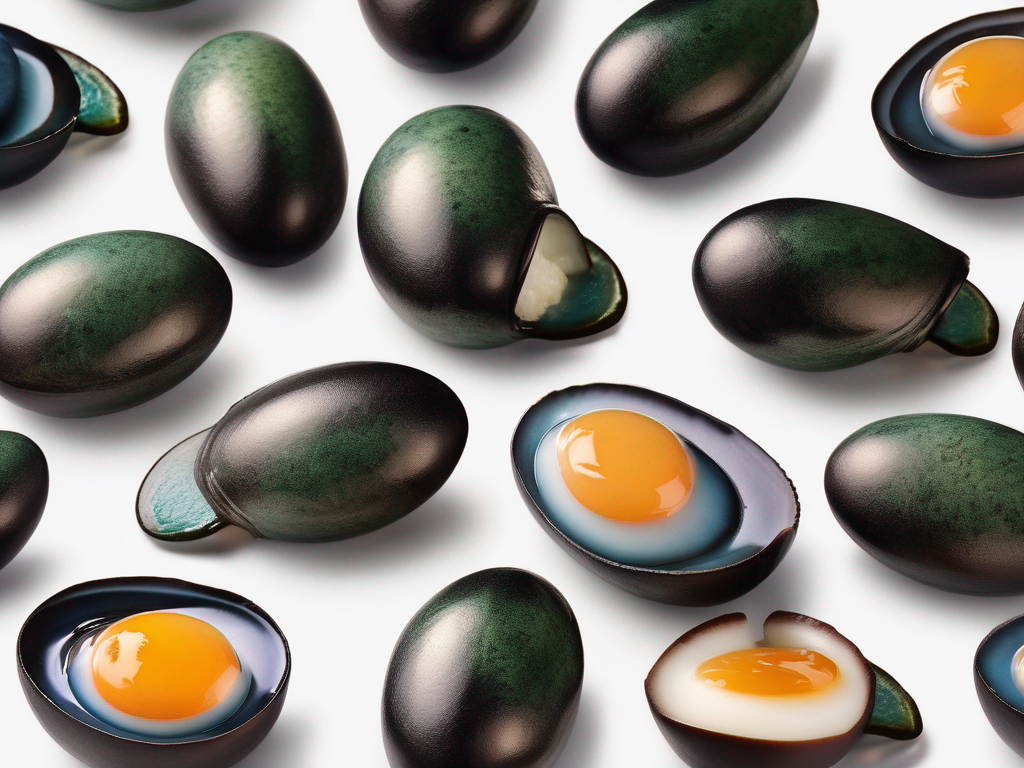
Tips for Checking the Freshness of Century Egg Before Consuming
Get Your Free Food Safety Cheat Sheet
30 most common foods with instant answers. Print it and stick it on your fridge—completely free!
Tips for Checking the Freshness of Century Egg Before Consuming
Century eggs, also known as preserved eggs or hundred-year eggs, are a unique delicacy in Chinese cuisine. These eggs undergo a preservation process that gives them their distinctive flavor and appearance. While century eggs can be a delicious addition to various dishes, it's essential to check their freshness before consuming them to ensure food safety. In this blog post, we will discuss practical tips for checking the freshness of century eggs to enjoy them safely. (Century egg)
Understanding Century Eggs
Century eggs are made by preserving duck, chicken, or quail eggs in a mixture of clay, ash, salt, quicklime, and rice husks for several weeks to several months. This preservation process causes the egg whites to become translucent and the yolks to develop a creamy texture with a unique flavor profile. Century eggs are commonly used in congee, salads, and as a side dish in Chinese cuisine.
How to Store Century Eggs
Proper storage is crucial to maintaining the freshness and quality of century eggs. Here are some tips for storing century eggs correctly:
- Store century eggs in the refrigerator to slow down the aging process and prevent spoilage.
- Keep century eggs in their original packaging or wrap them tightly in plastic wrap to prevent odors from other foods from affecting them.
- Store century eggs away from strong-smelling foods as they can absorb odors easily.
Tips for Checking Freshness
Before consuming century eggs, it's essential to check for signs of spoilage or deterioration. Here are some practical tips for checking the freshness of century eggs:
1. Examine the Shell
- Color: Fresh century eggs typically have a dark green to gray color on the shell. Avoid century eggs with a white or pink hue as they may indicate spoilage.
- Texture: The shell of a fresh century egg should be smooth and intact. Avoid eggs with cracks, mold, or unusual textures.
2. Check the Odor
- Fresh century eggs have a distinct aroma that is slightly sulfurous but not overpowering. If the egg emits a strong, foul smell, it may be spoiled and unsafe to eat.
3. Inspect the Whites and Yolk
- Egg White: The egg white of a fresh century egg should be translucent with a jelly-like consistency. Avoid century eggs with discolored or slimy whites.
- Yolk: The yolk of a fresh century egg should have a creamy, custard-like texture and a dark green to gray color. Discard century eggs with dry, powdery, or off-color yolks.
4. Perform a Float Test
- Fill a bowl with water and gently place the century egg in the water.
- A fresh century egg should sink to the bottom and lie flat on its side.
- If the egg floats or stands upright, it may be spoiled and should not be consumed.
5. Consider the Expiration Date
- Check the expiration date on the packaging of the century egg. Avoid consuming eggs that have exceeded their expiration date to ensure food safety.
Conclusion
Checking the freshness of century eggs before consuming them is essential to prevent foodborne illnesses and ensure a pleasant dining experience. By following the tips outlined in this blog post, you can confidently assess the quality of century eggs and enjoy them safely in your favorite dishes. Remember to store century eggs properly, inspect the shell, odor, whites, and yolk, perform a float test, and check the expiration date to make informed decisions about consuming century eggs. Enjoy this unique delicacy while prioritizing food safety and freshness.
For more information on century eggs and other food safety tips, visit [here](/food/century egg). (Century egg)
Related Posts
Here are some other articles you might find helpful:
- The Ultimate Guide to Preserving Century Eggs
- Top Tips for Detecting Spoilage in Century Egg (Preserved Egg)
- Is it Safe to Eat Century Egg (Preserved Egg) Past the Expiration Date?
- How to Properly Store Century Egg to Extend Its Shelf Life
- The Ultimate Guide to Properly Storing Century Egg (Preserved Egg)
Authoritative Food Safety References
These agencies and university labs inform every tip and health precaution we publish.
USDA FoodKeeper – Cold Storage Guidelines
Official refrigerator, freezer, and pantry timelines maintained by the U.S. Department of Agriculture.
Visit USDA FoodKeeperFDA Produce Safety Rule & Grower Guidance
Field-to-fridge handling practices that prevent contamination of fruits, vegetables, and leafy greens.
Visit FDA Produce SafetyCDC Foodborne Illness Prevention Hub
Surveillance-backed guidance on pathogens, symptoms, and steps to reduce foodborne illness risk.
Visit CDC Food SafetyUC Davis Postharvest Technology Center
University research detailing optimal storage atmospheres for produce after harvest.
Visit UC Davis PostharvestPenn State Extension – Home Food Preservation & Safety
Peer-reviewed extension bulletins on safe canning, chilling, and reheating practices.
Visit Penn State ExtensionGet Your Free Food Safety Cheat Sheet
30 most common foods with instant answers. Print it and stick it on your fridge—completely free! Want more? Upgrade to the complete guide with 70+ foods.
Scan your food directly and get instant safety info using our AI-powered camera feature.